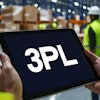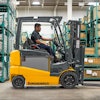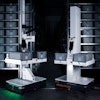
Since the days of the first dot-coms, the Internet transformed retail strategies. As e-commerce irrevocably shaped consumer buying behavior, retailers either adapted or died. With the recent advent of touch screens, tablets and mobile apps, consumer demand for convenient access to information and immediate purchasing capabilities continues to drive technological innovation.
Meanwhile, the consumerization of business-to-business (B2B) technology is also picking up speed, as a similar wave of innovation and adoption sweeps through the B2B landscape. For many B2B companies and their customers still dealing with overly complex legacy systems and manual processes, this development means that there is light at the end of the tunnel.
The Business-to-Consumer (B2C) World B2B Buyers Live in
Individual consumer habits with regard to finding, evaluating, choosing and receiving goods are radically different than what they were in the days before the Internet existed. By implementing omnichannel strategies, successful retailers and brands provide consumers with the choice of how they learn about and obtain their products. Simple and intuitive online and mobile user experiences only make it easier for consumers to do business with these companies.
Individual consumers can choose to buy online and pick up in store. They can complete in-store returns of products that they purchased on the website or order an out-of-stock garment right from the store’s fitting room. They may use the store as a kind of showroom and then buy the product online, or vice versa. In store, they may see an interesting new product, and use their mobile phone to learn product details, read reviews, purchase without waiting in line and receive it the next day.
Changing Expectations of B2B Buyers
For B2B buyers, the experience is all too often quite different. Many sales are made in a physical face-to-face meeting between a buyer and a sales representative. Reps go out on the road to visit customers and write orders. During in-person meetings, they introduce new products and discuss merchandising strategies, but most of the time, the meeting is to get an order completed.
The issue for manufacturers and distributors is how to stay top of mind and deliver a great service once the rep leaves the appointment. Without a B2B e-commerce portal, in between sales meetings, buyers are left with quickly outdated product catalogs and have to telephone customer service to find out information on the latest products. Simple reorders become a tedious task of waiting on hold during business hours, filling out and faxing paper order forms, or scanning and submitting them through email. B2B buyers are spending more time and effort during the ordering process than B2C buyers. Yet B2B buyers still lack the assurance that their order was entered accurately, and shipped promptly and in full.
Driven by their personal experiences as consumers purchasing from omnichannel retailers, a new mindset is taking hold for B2B buyers, in which they are demanding a better ordering experience. They are looking for the convenience of going online to get answers to simple product questions, scope out new product lines and place orders for merchandise. In a study conducted by Accenture last year, 75 percent of B2B buyers surveyed stated that they would buy again from a supplier with an easy-to-use website.
The Emergence of B2B Omnichannel Strategies
As B2B commerce technology advances to match its consumer counterparts, more manufacturers and distributors are taking the first step to building an omnichannel strategy. The first step is for manufacturers and distributors to roll out e-commerce websites that deliver intuitive user experiences that resemble what buyers already use. On these new sites, B2B buyers can conveniently order 24/7 and have access to up-to-date product catalogs, real-time inventory availability and past order history, just like their B2C counterparts. Through B2B e-commerce, manufacturers and distributors are able to provide a more convenient, self-service, B2C-like experience for buyers before and after sales rep visits.
While maintaining a direct connection with customers, online is an important initial step for manufacturers and distributors delivering an omnichannel strategy. More business is being conducted on smartphones and tablets than ever before, making mobile a crucial additional e-commerce channel. According to Forrester Research, 52 percent of B2B buyers are doing product research with their smartphones to search for products, browse catalog, and read reviews. Providing them with a native mobile application that converts education into orders from anywhere at any time is the logical evolution for manufacturers and distributors delivering a differentiated service.
For example, enabling a retailer’s staff to place orders on the store floor for immediate submission to the vendor’s back office speeds the processing and fulfillment time of the order. In addition, staff are able to look at the product on the shelf, as well as a high-definition (HD) picture in the vendor’s catalog to confirm that the right product is being ordered.
The most successful wholesale brands will be those who respond to the B2B omnichannel commerce opportunity in a responsive and thoughtful way. Even though orders can now come from multiple channels, including online B2B e-commerce websites and mobile apps, B2B sales is still largely about trust and relationship management. The field sales representative remains an instrumental and increasingly strategic part of the sales process.
The Changing Role of Field Sales
Just as physical and digital channels work together in retail, it’s important for manufacturers and distributors to look at the development of eCommerce as building on their sales teams, rather than eliminating them. Providing sales reps with mobile order writing solutions that include B2C like user experiences makes them more efficient and effective. Armed with such solutions, sales reps will have the product and customer information that they need at their fingertips for strategic conversations with customers and a seamless digital format for writing and submitting orders. Furthermore, messages that sales reps convey during customer visits can be reinforced through the manufacturers and distributors’ websites and apps the next time the buyer logs in.
By delivering multiple direct ordering options for buyers, and providing field sales teams with mobile sales order management solutions that make it faster to write and submit orders, sales reps are no longer primarily focused on taking orders. Instead, they are becoming trusted advisors that provide insights on assortment planning, inventory depth, reordering techniques and lean supply chain strategies.
Using e-commerce solutions, reps can talk with buyers about how to increase margin, phase purchases and understand the competitive landscape. With these insights from sales reps, buyers can differentiate themselves in a world of increasing competition from online channels and other brick-and-mortar players. Most importantly, sales reps can differentiate themselves and their products in an increasingly competitive wholesale environment.
B2C Order Experiences that Reflect B2B Complexity
While technical innovation is helping manufacturers and distributors to evolve their purchasing experiences, there remain critical differences between B2B and B2C buying.
B2B nuances, such as customer-specific pricing, payment and shipping, large volume orders, and minimums and case packs, make the B2B purchase more complex. Wholesalers need solutions that deliver superior customer experiences online and in person by transparently presenting these complexities through simple, elegant and intuitive user interfaces.
By implementing or upgrading sales channels that make it more convenient for buyers to place orders and for sales reps to write them, manufacturers and distributors are removing the speed bumps that existed for so long in their order processes. By making it easier to do business with them across sales channels, these suppliers are enjoying saving on costs, while increasing revenue by expanding their customer base and creating more loyal buyers. Manufacturers and distributors are realizing what retailers already learned in the consumer world: Choice and outstanding customer service is a more long-term differentiator than product or price. Manufacturers and distributors are adopting technology that helps deliver on that promise while reshaping the B2B buying experience.
Michael Elmgreen is the chief revenue officer at Handshake.


















